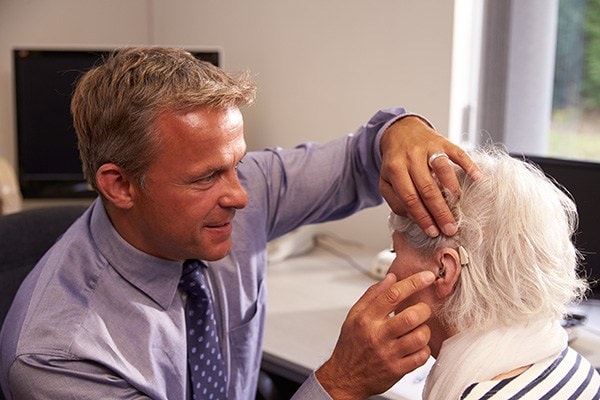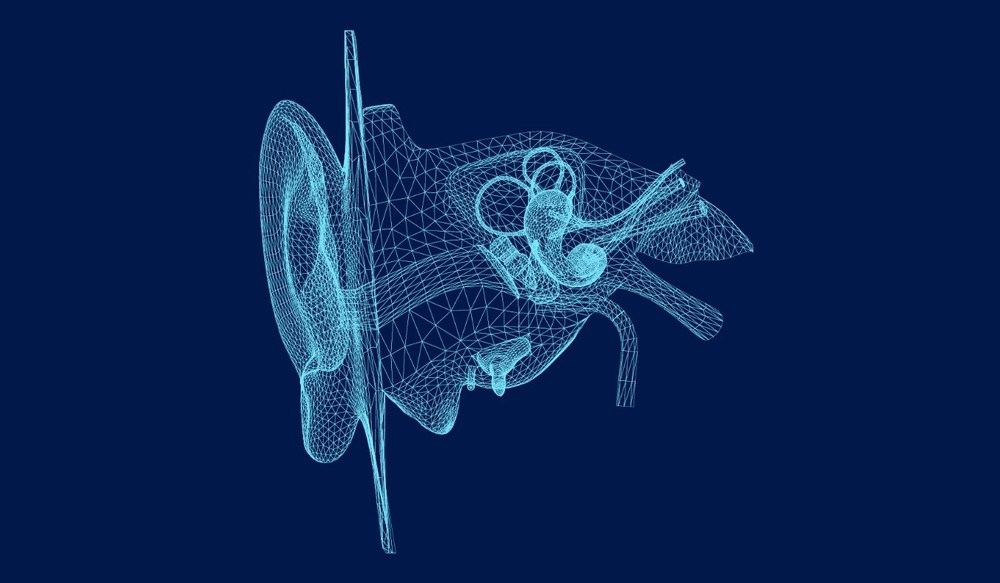Exploring the Psychological Effects of Hearing Loss
Hearing loss affects more than just your ability to catch words in a
Contact Us Today To Learn How You Can Save 40% Off A Pair Of Private Pay Hearing Aids! Learn More

By: admin | October 30, 2024
Ever been in the middle of a conversation when suddenly your hearing aid lets out a high-pitched whistle? It’s like your own personal alarm system going off at the worst possible moment. You might find yourself fumbling with your ear, trying to discreetly adjust the device while your friend looks on, confused. Or maybe you’ve avoided hugging your grandkids because you know that ear-splitting squeal is coming the moment you lean in close. Hearing aid feedback can be more than just annoying – it can be downright embarrassing, making you second-guess the very device that’s supposed to be helping you stay connected.
It’s frustrating when the tool you rely on to complete your day-to-day interactions starts acting up. But here’s the thing: you’re not alone in this, and that pesky whistle isn’t a sign that you’re doing something wrong. Understanding why feedback happens and how to address it can make a world of difference in your hearing aid experience.
Hearing aid feedback refers to the high-pitched whistling or squealing sound that can occur when amplified sound from a hearing aid is picked up by its microphone. This phenomenon typically happens when sound escapes from the ear canal and re-enters the microphone, creating a loop that results in feedback. Several factors can contribute to this issue, including poor fitting, excessive earwax buildup or improper placement of the hearing aid. It can be quite bothersome for the wearer and may signal that adjustments are needed to the hearing aid or its fit.
<p>While feedback can be frustrating, understanding its causes can help in managing the problem. Ensuring a proper fit is crucial; a hearing aid that fits snugly in the ear canal is less likely to allow sound to escape. Regular maintenance, such as cleaning the devices and checking for earwax blockages, is also essential. Additionally, modern hearing aids often come equipped with features designed to minimize feedback, such as feedback cancellation technology. If feedback persists, it’s advisable to consult with an audiologist, who can provide solutions tailored to the wearer’s specific needs.
Hearing aid feedback is a common issue that can arise from various factors, often making the wearing experience uncomfortable. One of the primary causes is an improper fit. When a hearing aid doesn’t sit securely in the ear canal, sound can escape and re-enter the microphone, leading to feedback. Ensuring that the device fits well is essential for effective sound amplification and minimizing this problem.
Another common cause of feedback is the presence of earwax buildup. Excessive wax can obstruct the ear canal and interfere with how the hearing aid functions. This blockage can cause sound to bounce back into the microphone, triggering feedback. Regular cleaning of both the hearing aid and the ears can help prevent this issue. Additionally, environmental factors, such as using the hearing aid in a noisy or reflective space, can also contribute to feedback. In some cases, adjustments to the hearing aid settings or using devices with built-in feedback cancellation features can help manage and reduce feedback, improving the overall experience for the wearer.
Your surroundings can have a big influence on hearing aid feedback. Just as the acoustics of a room can affect the sound quality of a concert, your surroundings can influence the performance of your hearing aids.
Certain settings, such as crowded places or windy outdoor areas, can increase the chances of experiencing feedback. In crowded areas, background noise may cause you to turn up your hearing aid volume, which could lead to feedback. On windy days, the wind can directly enter the microphone and cause similar issues.
Being aware of how your surroundings impact your hearing aids’ performance allows you to take proactive steps to manage potential feedback. For example, using specific features on your hearing aids designed for noisy environments or wearing a hat on windy days could help reduce this issue. This is another tool in your toolkit for managing and reducing feedback to improve your overall listening experience.
Regular maintenance of hearing aids plays a crucial role in preventing and managing feedback, ensuring that wearers enjoy a comfortable listening experience. One of the most effective ways to combat feedback is through consistent cleaning of both the hearing aids and the ear canals. Over time, earwax can accumulate and block the sound path, leading to feedback issues. By routinely cleaning the hearing aids according to the manufacturer’s guidelines and using a soft, dry cloth to wipe down the exterior, you can minimize the risk of wax buildup and ensure optimal sound transmission. Additionally, regular visits to your audiologist for professional cleaning and maintenance can help address any underlying issues that might contribute to feedback.
Another key aspect of maintenance is ensuring that the hearing aids fit properly. A secure fit prevents sound from escaping and re-entering the microphone, which is a primary cause of feedback. Audiologists can provide adjustments to the hearing aid’s fit and ensure that it conforms snugly to the ear canal. Regularly checking the earmolds for cracks or wear is also important; if the earmold becomes damaged, it can disrupt the seal and lead to feedback. Furthermore, keeping the hearing aids dry and safe from moisture will prevent any damage that could affect their functionality.
In addition to cleaning and fitting, monitoring battery health is essential. Weak batteries can impact the performance of hearing aids, leading to intermittent feedback. Ensuring that batteries are replaced regularly and checking for any signs of corrosion around the battery compartment can help maintain the device’s integrity. If feedback persists despite following these maintenance tips, consulting your audiologist is advisable. They can provide valuable insights and adjustments to optimize the performance of your hearing aids, ensuring a clearer and more enjoyable listening experience.
Earwax, or cerumen, is a natural substance produced by the body to protect the ear canal, but it can also lead to feedback issues in hearing aids. When earwax accumulates in the ear canal, it can create a blockage that interferes with sound transmission. This buildup prevents sound from traveling effectively from the hearing aid to the eardrum, causing the device to amplify sounds inappropriately. As a result, the microphone in the hearing aid may pick up the amplified sound, leading to a feedback loop that produces a whistling or squealing noise.
In addition to blocking sound pathways, excessive earwax can alter the fit of the hearing aid. If the device doesn’t sit securely in the ear, it can allow sound to escape and re-enter the microphone, further contributing to feedback. Proper ear hygiene is essential to prevent this situation. Regular cleaning of both the ears and the hearing aids can help reduce the risk of earwax buildup. If wearers notice signs of feedback, such as unexpected whistling or distortion, it’s important to check for earwax obstruction and consult with an audiologist for appropriate cleaning and maintenance recommendations.
A poorly-fit hearing aid can significantly contribute to feedback issues, leading to discomfort and reduced hearing aid effectiveness. When a hearing aid does not fit properly in the ear canal, sound may escape instead of being directed into the ear. This leakage can cause the microphone to pick up amplified sounds that escape the device, creating the annoying whistling or screeching associated with feedback. An improper fit can be due to various factors, such as incorrect earmold sizing, the type of hearing aid style chosen or changes in the shape of the ear canal over time.
If the hearing aid is positioned incorrectly or is loose, it may shift during normal movements, further compromising the seal needed for optimal performance. A secure fit is crucial for preventing sound from escaping and ensuring that the device delivers clear and focused amplification. If you’re experiencing feedback, it’s essential to consult with your audiologist.
Damaged hearing aids can indeed lead to feedback issues, often making the device uncomfortable to wear. When a hearing aid has physical damage, such as cracks or dents in the casing, it may disrupt the tight seal around the ear. This seal is essential for preventing sound from escaping and being re-amplified by the microphone. If the casing is compromised, sound can leak out, causing the device to pick up and amplify its output, resulting in the whistling or squealing sounds characteristic of feedback.
Additionally, internal components can wear down or malfunction over time, leading to similar issues. For instance, if the receiver or microphone is damaged, it may not function properly, amplifying sounds inappropriately and creating feedback. Regular maintenance and timely repairs are crucial for addressing these issues.
Yes, the settings on your hearing aids can significantly contribute to feedback issues. Hearing aids are designed with various features and adjustments that enhance sound quality, but if not properly calibrated, these settings can lead to feedback sounds. One common cause is the volume setting. If the volume is set too high, it can create a situation where sounds are amplified to a level that causes the microphone to pick up its own output, resulting in that characteristic whistling or squealing noise.
Another setting that can affect feedback is the program or mode selected on the hearing aid. Many modern devices have multiple settings designed for different environments, such as quiet rooms or noisy spaces. If the hearing aid is in a mode that doesn’t match the surrounding sound conditions, it may amplify sounds unnecessarily, increasing the likelihood of feedback. Additionally, features like noise reduction or wind noise management may not be functioning optimally if not adjusted for the individual’s hearing needs. Regularly consulting with your audiologist to fine-tune these settings can help minimize feedback and ensure that your hearing aids provide the best possible listening experience.
There comes a time when troubleshooting on your own may not be enough to manage persistent feedback issues. This is when you should consider consulting an audiologist.
Remember, managing hearing aid feedback is not just about enhancing your listening experience; it’s also about ensuring optimal performance of your device and protecting your overall hearing health.
If you’re experiencing persistent feedback issues or if you simply want more information about optimizing your hearing aid performance, we encourage you to reach out. Our team of dedicated specialists is ready and willing to help solve any issues that may be affecting your hearing aid’s functionality or comfort.
Contact us today at our Richfield, MN office by calling (612) 200-8403 for a personalized consultation or for more information on managing and reducing hearing aid feedback. We look forward to helping improve not only your device’s performance but also enhancing your overall quality of life through better hearing health.
Tags: hearing aid basics, hearing aid repair, hearing aid styles

Hearing loss affects more than just your ability to catch words in a
By: admin | October 20, 2025

Communication is at the heart of almost every relationship in your life.
By: admin | July 29, 2025

When hearing difficulties start affecting your conversations at work,
By: admin | June 20, 2025
